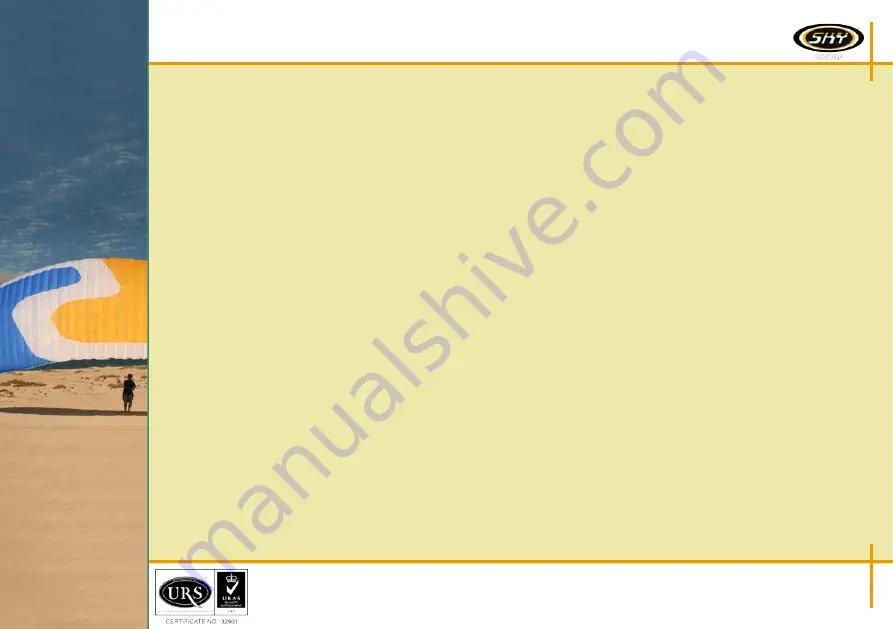
14
D. Flying techniques
In general the ATIS 3 can be flown conventionally.
The points listed below should help you to familiarize with your new wing even more quickly.
1. Checking the paraglider before take off
• Check the canopy: Check for outer (sail), structural damages (ribs) or damages to the sewing.
• Check the gallery-lines: Check for damages and twists.
• Check the main lines: Check for damages and correct mounting.
• Check the quick links: Quick links must be mounted correctly and securely locked.
• Check the risers: Check for damages and twists.
• Check the brake lines: Check brake lines for free travel and correct length (when flown
with no brake applied the brakes must not deform the canopy).
Brake handles must be linked to the brake lines properly and brake lines must be able
to run freely through their pulleys.
Summary of Contents for atis 3
Page 1: ...English 2010 ...
Page 9: ...9 1b Line plan ...










































